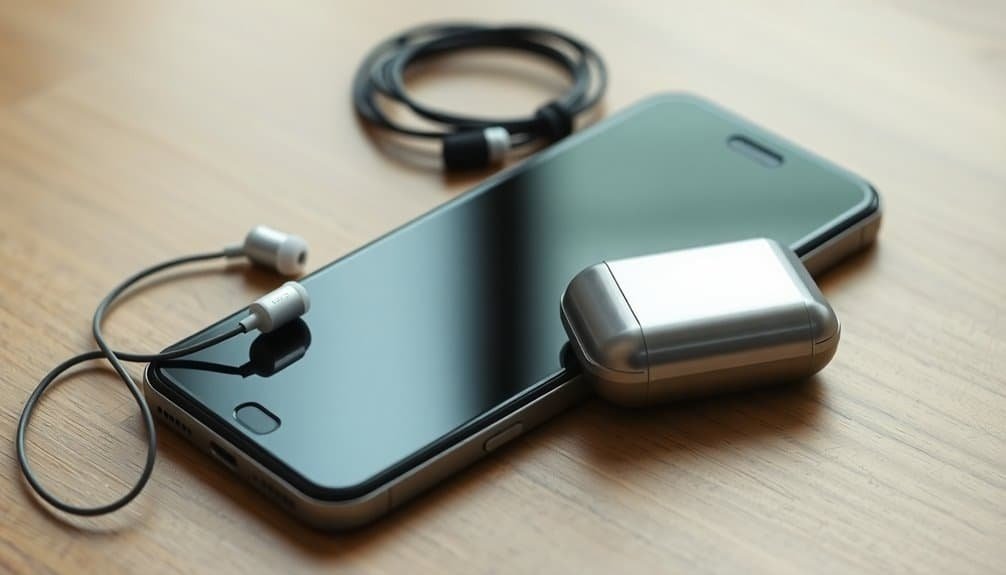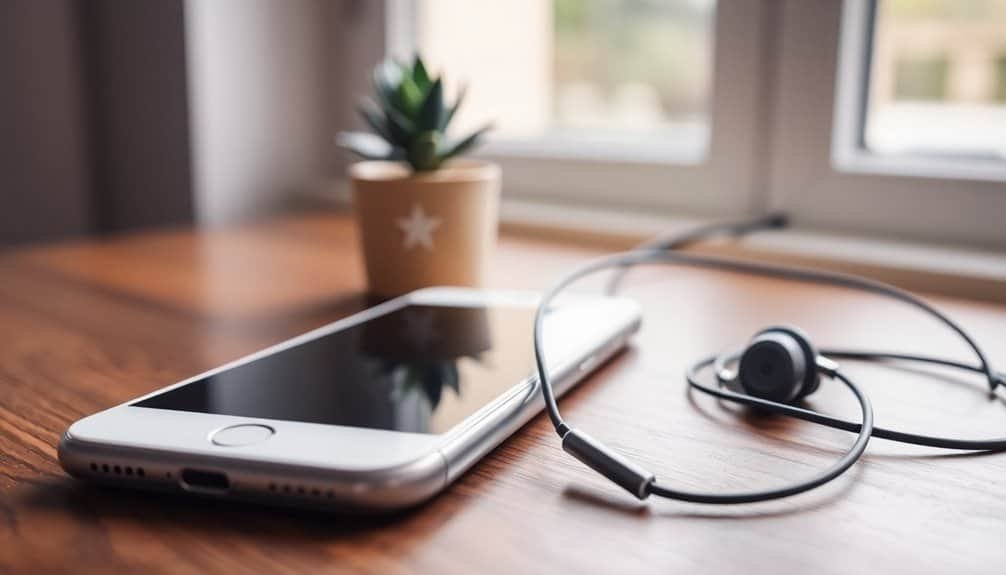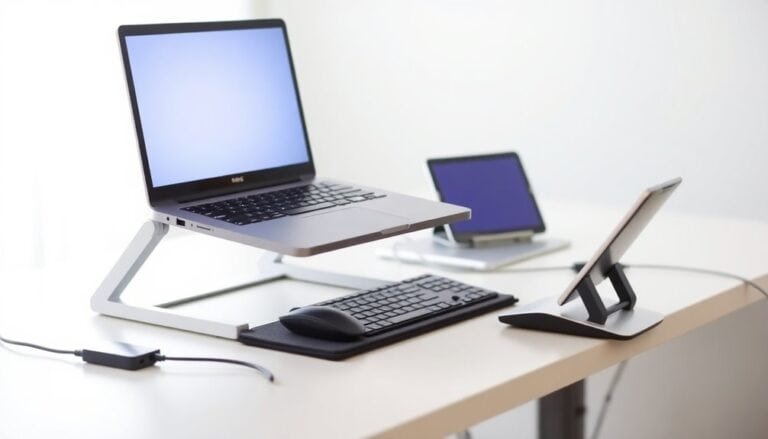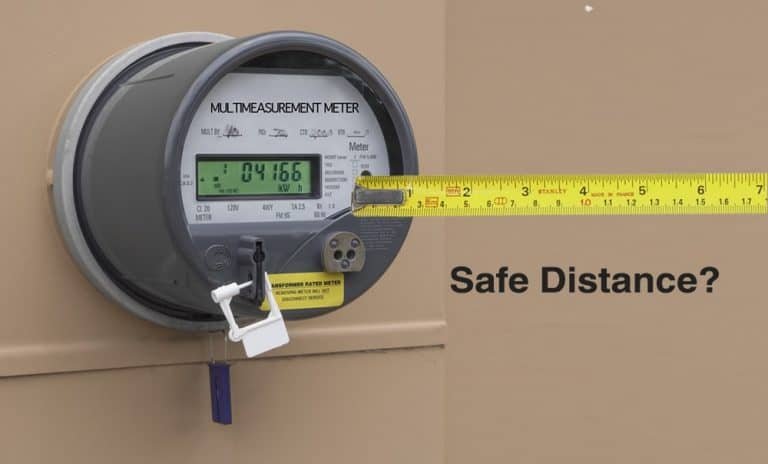Cell Phone Safety Tips to Reduce Radiation
Store your phone in a bag or on a desk and use headsets or speaker mode to minimize radiation exposure during calls. Choose phones with low Specific Absorption Rate (SAR) values and make calls when the signal is strong to reduce emissions.
Activate airplane mode when not in use and limit call duration to further decrease exposure. These measures can mitigate risks, while ongoing research continues to explore health implications.
Disclaimer: As an affiliate, I may collect a share of sales from the links on this page.
Understanding RF Radiation and Its Risks

While you use your cell phone, you may not realize that it emits RF radiation, a type of non-ionizing electromagnetic radiation. RF waves fall between FM radio and microwaves on the electromagnetic spectrum. They facilitate communication with cell towers, using lower energy levels than ionizing radiation like X-rays. Additionally, both cell phones and microwaves emit radiofrequency radiation, which is a form of electromagnetic radiation.
However, RF radiation is classified as a “possible human carcinogen” by the International Agency for Research on Cancer (IARC). Ongoing research examines its potential ties to cancers, particularly brain tumors. Notably, current evidence suggests no causal link between cell phone use and cancer.
Despite some concerns, regulatory bodies like the FDA find no definitive link between cell phone RF exposure and serious health issues based on current evidence.
Effective Ways to Reduce Direct Exposure
How can you effectively minimize your exposure to RF radiation while using a cell phone?
Start by increasing physical distance; keep the phone in a bag or far corner of the room when not in use. Position it on a desk during calls instead of holding it. Additionally, being mindful of the Specific Absorption Rate can help you choose devices that emit lower levels of radiation. Keeping the phone away from the body when not in use can drastically reduce your radiation exposure.
Utilize headsets—wired options are safer than Bluetooth—to distance your head from the phone. Choose text messages over voice calls for shorter interactions.
Activate airplane mode when not needing connectivity, and turn off unnecessary settings. Turning off Wi-Fi and data can also decrease radiation emissions when you’re not using them.
Finally, avoid using your phone in enclosed spaces where signals are weak, increasing energy emissions.
Guidelines for Safe Cell Phone Use

To guarantee safe cell phone practices, you should follow specific guidelines that minimize your exposure to radio frequency (RF) energy.
Maintain distance by using speaker mode or a headset, which reduces body contact. Opt for phones designed with better antenna placement to lower RF emissions. Wireless earbuds, like many cell phones, emit high levels of EMF radiation, so consider using wired options instead.
In areas with strong signals, cell phone exposure decreases, so make calls where the reception is good. Limit your usage time to minimize exposure overall. This is particularly important as studies indicate that heart tumors in male rats have been linked to certain levels of RF exposure.
Stay informed about your device’s settings, as many phones offer modes that reduce emissions.
Finally, utilize alternative wired communication methods whenever possible to further decrease RF exposure.
Staying Informed About Health Studies
Staying informed about health studies on cell phone radiation is crucial for understanding potential risks.
Recent WHO-funded research indicates that while cell phone radiation may cause cancer in animals, evidence for humans remains uncertain. Current findings show no strong link between cell use and brain cancer but suggest possible risks for other cancers, including prostate cancer.
Major organizations like the WHO and the NCI emphasize ongoing research to clarify these issues. As technology evolves, it’s important to stay updated on emerging trends and regulatory changes regarding radiation exposure to guarantee your safety and well-being in an ever-connected world.
The Importance of Consumer Awareness

Understanding the importance of consumer awareness regarding cell phone radiation is essential, especially as cellular technology continues to advance.
Despite 95% of American adults using cell phones, many aren’t aware of potential risks. Inconsistent messaging from industry and government complicates understanding.
Agencies like the FDA and FCC provide safety tips, but these are often buried in fine print. When you’re informed, you’re more likely to adopt safety measures, like using speakerphones.
Increased awareness can drive demand for clearer information from manufacturers. Collaborating regulatory bodies can enhance educational efforts and promote consistent messaging, ultimately empowering you to make safer choices.
Frequently Asked Questions
Do Different Phone Models Emit Varying Levels of RF Radiation?
Yes, different phone models do emit varying levels of RF radiation. You can check the Specific Absorption Rate (SAR) values on manufacturer websites or databases to understand how much radiation each model emits.
Can Using a Case Reduce Radiation Exposure?
Like a shield against an unseen foe, using a case can reduce radiation exposure. However, its effectiveness hinges on design and usage—incorrectly used, it might even amplify your phone’s emissions. So, tread wisely.
What Distance Is Safest to Hold a Phone While Talking?
When you’re talking on the phone, try to hold it at least 0.39 inches away from your body. Increasing this distance considerably reduces exposure, so consider using speakerphone or a headset for better safety.
Are Smartphone Accessories Tested for RF Emission Safety?
Think of smartphone accessories as the unseen guardians of your connectivity; however, most aren’t rigorously tested for RF emissions. While they must meet certain standards, their safety isn’t always guaranteed like your phone’s. Stay informed!
How Can I Find My Phone’s Specific RF Exposure Level?
To find your phone’s RF exposure level, check the manufacturer’s website for SAR values. You can also explore regulatory databases and use apps to estimate exposure based on your usage and environment.
Conclusion
By following these safety tips, you can skillfully navigate the digital world while avoiding potential hazards. Understanding RF radiation enables informed decision-making to minimize exposure.
Using safe usage guidelines and staying informed on research prioritizes your health. Awareness transforms uncertainty into strength, empowering you to protect yourself and others from cell phone radiation risks.






